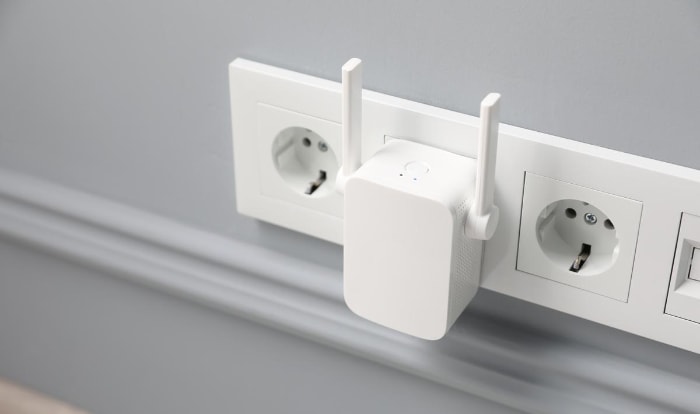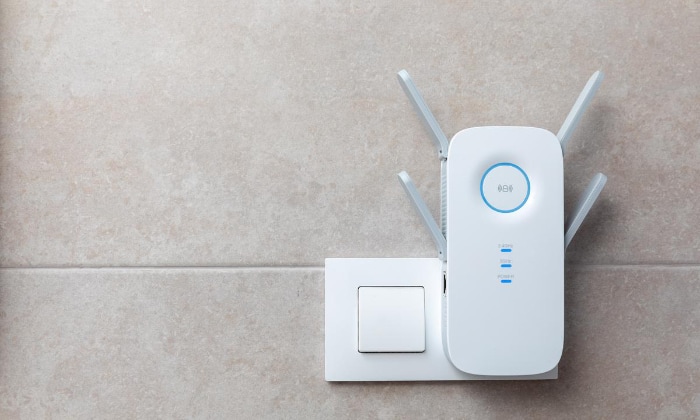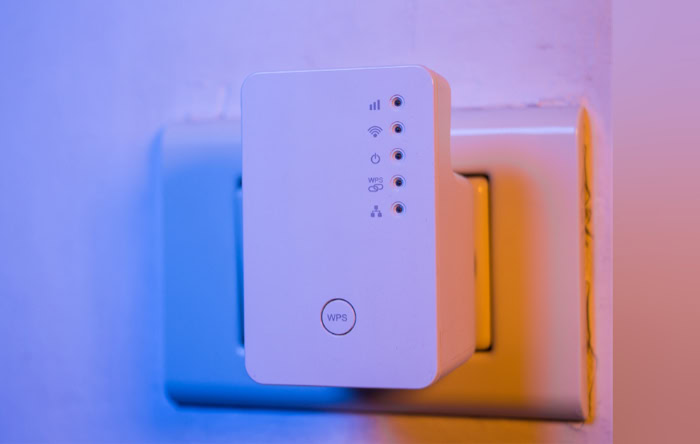Are WiFi Extenders Worth It? Your Questions Answered

Struggling with slow internet or dead spots in your home can be frustrating, especially when streaming, gaming, or working online. For many, WiFi extenders promise a quick and affordable fix, claiming to boost signals and eliminate those annoying gaps in coverage.
But before you commit, it’s worth understanding how these devices work and whether they’re the right solution for your needs. While extenders can help in certain situations, they aren’t a one-size-fits-all answer and often come with performance limitations.
So, are they worth your time and money, or would alternatives like mesh systems or upgraded routers be a smarter investment?
How WiFi Extenders Work (and Their Limitations)
WiFi extenders have gained popularity as a potential solution to one of the most common frustrations: inconsistent internet coverage in the home. These devices are designed to address weak or nonexistent signals in certain areas—also known as dead zones—by rebroadcasting an existing WiFi connection.
However, while they can improve connectivity to some extent, they operate with limitations that are important to understand before deciding if they’re the right tool for your situation.
Core Functionality
The main job of a WiFi extender is to capture the signal from your router and retransmit it, effectively extending its reach. However, this doesn’t amplify your internet connection’s strength; it simply repeats the signal.
As a result, extenders rely heavily on their placement. If positioned too far from your router, they won’t receive a strong enough signal to rebroadcast effectively, which can lead to poor performance in the extended areas.
Dual-band WiFi extenders are common and marketed for their ability to handle modern internet loads, but they come with an inherent trade-off. Most extenders use one band to communicate with your router and the other to connect with your devices.
This type of configuration, while convenient, results in throughput reduction. For example, if you’re operating on a 2.4 GHz and 5 GHz setup, the extender splits resources between receiving the router’s signal and communicating with connected devices, which can cut speeds significantly.
Performance Trade-Offs
While extenders can help alleviate connectivity issues, they don’t typically provide the same level of performance as your router. One of the most noticeable drawbacks is the impact on both latency and bandwidth.
An extender’s reliance on rebroadcasting signals often results in slower speeds, sometimes cutting bandwidth by up to 50%. For activities requiring high speeds, such as streaming in 4K or online gaming, this could lead to noticeable buffering and lag.
WiFi extenders are also not ideal for large homes or spaces with multiple floors. They work best for addressing small gaps in coverage, such as a single room or an outdoor patio.
Attempting to use extenders to cover an entire house often leads to overlapping signals, significant speed degradation, and connectivity issues as devices struggle to stay connected when moving between areas.
Compatibility Considerations
The performance of a WiFi extender is strongly influenced by the type and age of the router it is paired with. Many extenders are backward-compatible with older Wi-Fi standards, like Wi-Fi 4 and 5, but they won’t be able to take full advantage of the speeds offered by modern routers utilizing Wi-Fi 6 technology.
If your router and extender are mismatched in terms of standards, the extender will default to operating at the router’s capabilities, limiting your network’s overall potential.
Device compatibility also plays an important role. Smart home gadgets, gaming consoles, and other devices with high data demands can place additional strain on an extended network.
Some devices may also struggle to switch seamlessly between the router and the extender, leading to connection drops or lower speeds in certain areas. Ensuring compatibility between your extender, router, and connected devices is critical to achieving the best possible results.
When to Use a WiFi Extender vs. Alternatives

Finding the right solution for WiFi coverage problems depends largely on the layout of your home, your internet usage habits, and your budget. While WiFi extenders can be a convenient fix for certain situations, they are not always the most effective option.
It’s important to weigh their advantages against their limitations and consider alternatives such as upgrading your router or investing in a mesh WiFi system.
Ideal Scenarios for Extenders
WiFi extenders shine in situations where the coverage gaps are relatively small and isolated to specific areas. For example, if your router provides strong connectivity in most parts of your home but struggles to reach an outdoor patio or a single room, an extender can help bridge the gap without requiring significant investment.
Likewise, renters often find extenders ideal because they provide a temporary solution without the need for complex installations that might not align with landlord restrictions.
Budget-conscious users also appreciate WiFi extenders for their lower up-front cost compared to other solutions. While they don’t match the performance of mesh systems or high-end routers, they can be sufficient for basic internet activities like browsing and social media use.
For smaller spaces or situations where upgrading the entire network is not an option, extenders can be a practical choice.
Limitations That Warrant Alternatives
Despite their usefulness in certain scenarios, extenders are not well-suited for environments that demand high performance or cutting-edge technology. Outdated routers can severely limit the effectiveness of extenders by bottlenecking speed and efficiency, especially if they lack support for modern Wi-Fi standards.
For users dealing with inconsistent speeds or frequent buffering on multiple devices, upgrading the router itself often makes more sense than adding an extender.
High-performance needs such as 4K streaming, competitive gaming, and simultaneous usage across many devices can overwhelm a network supported by extenders. Their inherent speed reduction and latency issues often leave users unsatisfied in situations that demand reliable, high-bandwidth connections.
For those with larger homes or extensive performance requirements, alternatives like mesh systems or more robust routers provide a superior experience.
Mesh Systems vs. Extenders
Mesh WiFi systems represent a more comprehensive solution for whole-home coverage, offering consistent speed and performance across larger spaces. Unlike extenders, which simply rebroadcast signals, mesh systems generate multiple access points that work together to create seamless connectivity no matter where you are in the home.
This makes them ideal for large households or multi-story buildings where dead zones and overlapping signals are common problems.
Cost is an important factor when comparing these technologies. Mesh systems are significantly more expensive than extenders upfront, making them less appealing for those on a tight budget.
However, their scalability and long-term reliability often justify the price for families or individuals who plan to stay in the same home for years. For targeted fixes and temporary setups, extenders are the better choice, but for users seeking a lasting solution to widespread coverage issues, mesh systems stand out as the superior option.
Cost, Setup, and Practical Considerations

WiFi extenders offer a range of advantages, but their true value is tied to factors like budget, ease of setup, and how well they adapt to the challenges of long-term use. While they are generally affordable and easy to install, extenders are not without hidden costs or practical downsides.
Budget and Value
WiFi extenders are often chosen for their affordability compared to other solutions like mesh systems or upgraded routers. Basic models typically cost between $15 and $50, while higher-end options with better performance and additional features may range closer to $100.
For small households or targeted coverage improvements, a single extender can provide adequate results at an affordable price, making it a popular choice for users with budget restrictions.
However, extending WiFi coverage in larger homes comes with hidden costs. Multiple units may be required to cover several dead zones, which can add up quickly.
Additionally, cheaper extenders may lack modern Wi-Fi compatibility, leading to an eventual need for replacement as technology evolves. For long-term value, users must weigh the initial cost against the potential need for upgrades or supplementary devices in the future.
Installation Complexity
WiFi extenders are generally marketed as straightforward, easy-to-use devices that don’t require technical expertise to set up. Many extenders support plug-and-play installation with WPS pairing, which allows users to connect the extender to the router with the press of a button.
This simplicity makes extenders an appealing option for individuals seeking a hassle-free solution to WiFi coverage issues.
Advanced configurations, however, can feel intimidating for users unfamiliar with network settings. Some extenders require access to a web interface for full setup, which involves manually selecting WiFi channels, optimizing signal strength, or inputting SSIDs and passwords.
While these steps allow for better performance, they demand time and attention to detail. Users should also be mindful of placement, as positioning the extender in the wrong location can significantly impact how well it performs.
Long-Term Usability
WiFi extenders can provide reliable service initially, but their long-term usability depends on factors like firmware updates and external interference. Modern extenders often come with software that needs occasional updating to keep up with security protocols and new Wi-Fi standards.
Without these updates, performance may degrade over time, reducing their reliability compared to newer devices.
Interference from household appliances is another practical consideration. Microwaves, cordless phones, and even baby monitors can disrupt extended WiFi signals, leading to inconsistent speeds or dropped connections.
Users may also encounter challenges when shifting devices between the router and extender, as some gadgets struggle to transition seamlessly, which can result in frustrating connectivity gaps. For sustained usability, careful management of external factors and regular checks on device settings can go a long way in ensuring the extender remains effective.
Key Pros and Cons to Weigh

WiFi extenders, while helpful in improving network coverage, come with strengths and weaknesses that users should carefully consider before making a decision. Their ability to eliminate dead zones makes them attractive for basic coverage needs, but their limitations in terms of speed, latency, and compatibility with modern technology can create challenges.
Advantages
One of the biggest benefits of WiFi extenders is their ability to address coverage issues without requiring a significant investment. For users experiencing dead zones in specific areas of their home, extenders provide a targeted solution with a relatively low upfront cost compared to alternatives like mesh systems.
This affordability is particularly appealing for renters or individuals who need a quick and effective way to improve signal strength in smaller spaces without committing to major network upgrades.
Ease of use is another reason extenders remain a popular choice. Many models are designed with non-technical users in mind, offering straightforward installation processes such as plug-and-play configurations or WPS pairing.
This simplicity ensures that even those with limited technical knowledge can set up an extender in just a few minutes, making it an accessible option for a wider range of users.
Drawbacks
While WiFi extenders can improve coverage, they often come with performance trade-offs. A common issue is the reduction in speed that occurs when signals are rebroadcast.
Most extenders split bandwidth between the router and connected devices, leading to a noticeable drop in performance. For activities that require high-speed internet, such as streaming in 4K or online gaming, this can result in buffering, lag, or inconsistent connectivity.
Latency can also increase, further impacting the user experience in performance-intensive tasks.
Compatibility with evolving technology is another limitation. Many extenders are built to work with older Wi-Fi standards, which means they might not fully support the faster speeds and advanced features of newer routers with Wi-Fi 6 capability.
As a result, extenders often lack future-proofing, forcing users to replace them sooner than expected if they upgrade other parts of their network. For those looking for a long-term solution, this aspect can make extenders less appealing compared to alternatives like mesh systems or more advanced routers.
Conclusion
WiFi extenders can be an effective solution for small, isolated coverage gaps, particularly for users seeking a budget-friendly option. They work well in environments where dead zones are limited to specific areas, such as a single room or an outdoor space, and offer convenience through simple installation and affordable pricing.
Renters, casual internet users, or those with minimal performance demands often find extenders a practical way to improve their network without committing to major upgrades.
However, extenders are far from ideal for users with high-performance needs or systemic router issues. Their limitations in speed, latency, and compatibility make them less suitable for demanding activities like competitive gaming or 4K streaming.
Large homes or setups requiring consistent, reliable connectivity across multiple devices may benefit more from alternatives such as mesh systems or upgraded routers, which provide better scalability and future-proofing.
Extenders serve as a situational tool rather than a universal fix. While they can resolve targeted WiFi issues, their trade-offs often outweigh their benefits in more complex or performance-heavy scenarios.
Carefully evaluating your space, budget, and connectivity needs will help determine whether a WiFi extender is the right solution or if investing in a more robust, long-term option is the better route forward.


